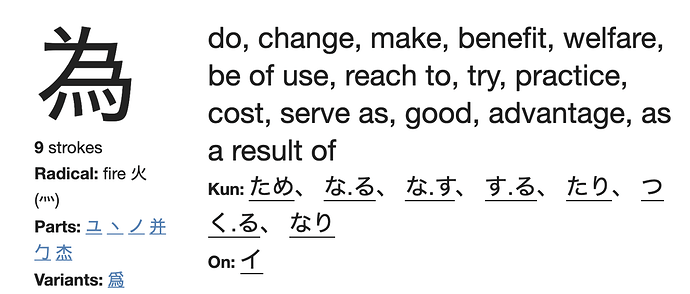I am looking for nice dictionary that lists kanji with theirs proper Japanese meaning. What I mean is that for Japanese person 本 clearly has to mean ほん, and 池 mean いけ. And some short definition (easy Japanese or english) would be much welcome. I would like to slowly start the process eliminating english from my understanding of Kanji (at some point I will have to do the same with vocab, then grammar).
If that dictionary would give sample words with readings respecting how important given reading is so I can make decision if it is time to learn it already it would be nice bonus. I think I could spend my time better than learning 天王 to get the reading のうfor 王… I am still to find another word with that reading without looking into dictionary (another one I know is 四天王… but し for 四 at least looks more useful). And it was one of the first readings I was learning…
What is tricky that many kanji share the meaning as well as pronunciation (見る vs 観る) where the difference in meaning is small but still existing. I don’t know how to solve this problem.
I will be very happy with any input 
Thank you in advance. 
Edit:
My reason to going for this is the fact that 2 worrying things happened: yesterday I wrote down kanji in a second from the english word without remembering what that english word meant… And today I got this kanji 為 only by looking how long entry is without stoping to understand it. My brain clearly is doing some unproductive trickery here.
I am pretty sure that this kanji has an elegant meaning or two to Japanese people. It can’t be that elaborated…


